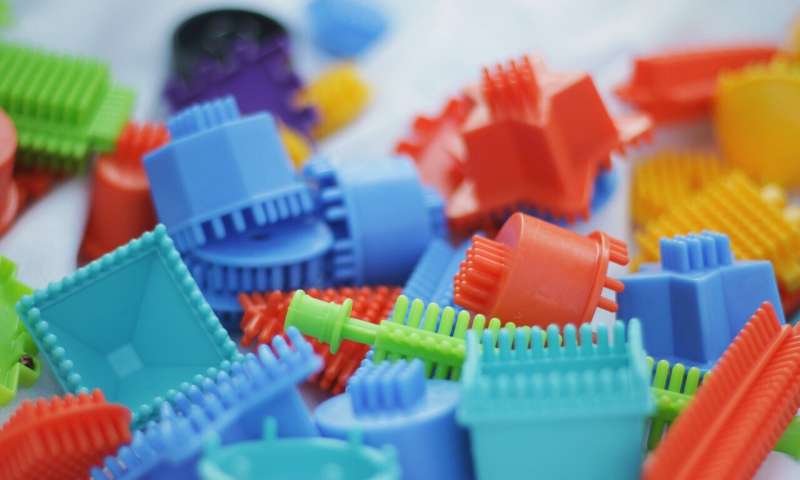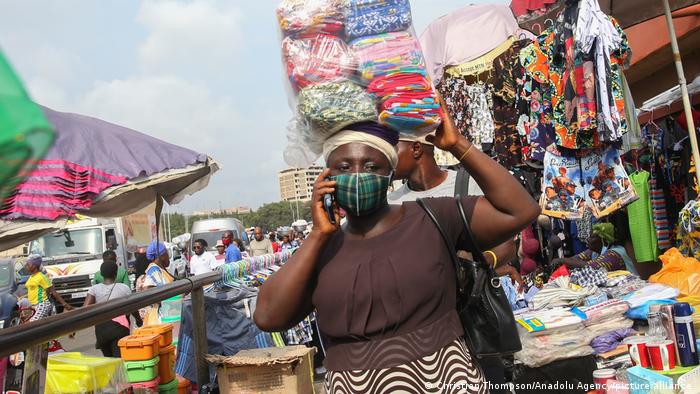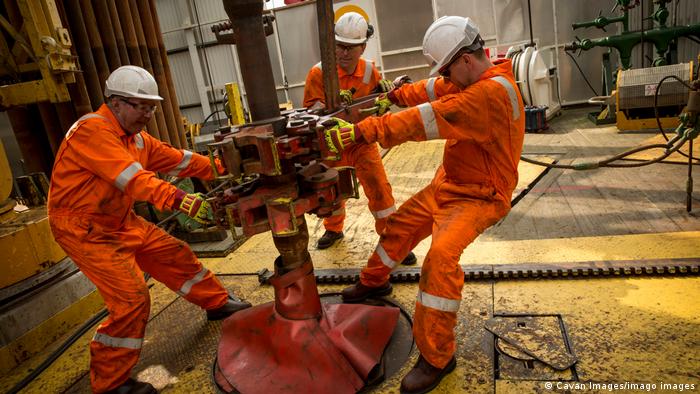Canada’s new environment and climate change minister has some first-hand experience when it comes to living in a resource town that goes through boom and bust cycles.
Steven Guilbeault, 51, hails from La Tuque, a small town of 11,000 people in north-central Quebec, about 290 kilometres northeast of Montreal.
As a young boy, he climbed a tree to stop loggers from cutting it down — perhaps foreshadowing a 2001 stunt, scaling the CN Tower to draw attention to the pressing issue of climate change.
In his new role, Guilbeault will have his work cut out for him. Prime Minister Justin Trudeau has assigned the minister 40 distinct tasks in a mandate letter that is perhaps the longest one sent to any minister in the federal cabinet. It all means that Guilbeault will need to work with other federal cabinet ministers and stakeholders to assist energy workers in transitioning away from fossil fuel jobs.
He tells The Narwhal that it’s a mission that hits home.
“I come from a small pulp and paper town, mono-industrial town near Lac Saint-Jean which has gone through a series of shock waves because of what has happened in the forestry industry,” says Guilbeault, who took over the federal portfolio in October.
Get The Narwhal in your inbox!People always tell us they love our newsletter. Find out yourself with a weekly dose of our ad‑free, independent journalism
Guilbeault studied industrial relations, computer sciences and then political science at the Université de Montréal in the early ‘90s. While there, climate activism started to shape Guilbeault’s career and, in 1993, he and several colleagues established Action for Solidarity, Equity, Environment and Development — the forebearer to Équiterre, Quebec’s leading environmental organization. He later acted as Greenpeace Canada’s director and campaign manager for 10 years, which spurred him to the highest point of the Toronto skyline.
Though we both now live in Guilbeault’s Montreal riding of Laurier-Sainte-Marie, I speak to the minister over Zoom as the latest wave of COVID-19 is sweeping across Quebec. Guilbeault’s embattled bicycle hangs on the wall behind him.
Last November, when the minister appeared on a hybrid session of parliament with this same background, Conservative MP Ed Fast accused him of making a political statement. After I comment on the fact that he hasn’t changed his decor, Guilbeault quickly points out that his — year-round — chosen mode of transportation never made waves during his two years as heritage minister.
But today, Guilbeault is the driver of the Trudeau government’s climate plan, putting some leaders, oil and gas companies and their allies on edge. Meanwhile, some of his former allies say he betrayed the environmental movement by joining the governing Liberal party in 2019 after it orchestrated the takeover of the Trans Mountain oil pipeline and expansion project.
“Sometimes you decide to work with people with whom you don’t necessarily agree on everything, but if you find common ground, and if you think that by working together you can move the dial along, then you do it.”
I spoke with the minister about a looming ban on plastics, slashing pollution from industry, being labelled a climate alarmist for recognizing what’s now common sense, and how the word “compromise” became a go-to word in his vocabulary.
This interview has been edited for length and clarity.
You once stood side-by-side with CEOs of oil companies on a stage as Rachel Notley unveiled her government’s climate change plan for Alberta. How has that experience prepared you for your current role as environment minister and what do you hope to accomplish with the oil and gas industry?
It wasn’t the first time I worked with industry, it wasn’t the first time I worked with oil companies, it certainly wasn’t the first time I worked with provincial or other levels of government. But I think it certainly shows that I can work with people who have views that are not my own. Certainly it shows that I’ve worked with the Alberta government before and that I’m perfectly happy and capable of doing it again. And in terms of how I intend to work with oil companies, I mean I intend to work with these companies or the sector as I will with any other sector.
Steven Guibeault, MP for Montreal’s Laurier-Sainte-Marie riding, was named Canada’s environment minister in October, after two years as heritage minister. Photo: Selena Phillips-Boyle / The Narwhal
We have to decarbonize our society and that includes transportation, and we’ve made a number of commitments on that, some previous to the last election campaign but certainly since then as well. We want to decarbonize the steel sector, the cement sector, the auto sector, the aluminium sector and the oil and gas sector. So I will be working with them as I would be working with others.
It is true that oil and gas and transportation are our two biggest challenges in Canada, which is why when you look at our approach, you’re seeing more measures towards these sectors than towards others. Not because others aren’t important, we’re doing stuff in the building sector, we’re doing stuff on landfill, but both these sectors are 50 per cent of our emissions so they should receive a large portion of our attention. And for those who said that the cap was unfairly targeting the oil and gas sector, I’d said look at transportation, we are putting a cap on the transportation sector as well because at least for light duty vehicles, new sales will have to be zero emissions, 100 per cent by 2035, so in essence we’re also putting a cap on that sector as well.
In your recent ministerial mandate letters, there are several ministers who have been tasked with setting up a Just Transition Fund for workers in oil-producing provinces: Alberta, Saskatchewan and Newfoundland and Labrador. What is your message to workers whose jobs might not exist, two, five or 10 years from now and do you think your government is working fast enough to help them?
Our society has gone through a number of technological transformations since the industrial revolution. It’s not the first, unlikely to be the last one. And I mean ultimately just transition is about how do we adapt our workforce to changing technological conditions in the workplace. We could not be talking about climate change and still be having conversations about the need to make sure that people are properly trained, people are properly ready for the jobs that will be in vogue in five years, in 10 years, in 15 years.
The difference this time is that I think in many cases before we didn’t really see [technological changes] coming or we didn’t want to see them coming, this time we do. We know it’s happening, it’s happening around the world, it’s certainly happening in Canada and, in answer to your question, are we doing enough? I’d say not yet. I’d say we need to do more and the fact that you’re seeing this in many ministers’ mandate letters is a clear sign that this is a priority for our government.
Speaking of the mandate letters, you might have the longest of all the ministers in cabinet.
I’ve heard, I haven’t compared them, but yeah.
Something like three dozen items. Have you given yourself any personal deadlines or goals of how to achieve everything on your list?
Well, I mean some deadlines are self-imposed. We have a commitment to phase out fossil fuel subsidies by 2023. So in some cases they’re very clear. In others they’re not necessarily as clear, but on a number of either legislative or regulatory measures we want to implement, we have said we want to do this in the very near future. As a minority government, it would be optimistic to think that we have more than two years. We might, but at this point I’m not assuming that this is the case, so I have to do everything that I can to ensure that we deploy as many of the measures that we’ve announced. Certainly on climate, but on plastics, we want to see movement very soon on that, the Canadian Environmental Protection Act, I have announced we’ll be tabling the bill, a similar version to the one that was tabled by minister Wilkinson, that will happen early in the New Year when the House resumes.
A long-time environmental activist, Guibeault says the current concerns around climate change were labelled alarmist 30 years ago. Photo: Selena Phillips-Boyle / The Narwhal
Are you able to speak more about the movement on plastics that we’re going to be seeing more of soon?
Well, we had committed to present regulations by the end of 2021. [Editor’s note: the regulations were published on December 25, with public comment open until March 5.] The initial rounds of consultation we did while elaborating the regulations, we received something like 24,000 submissions, which is probably one of the highest number we’ve ever received on anything at Environment Canada. And the overwhelming majority of these comments were in favour of governments doing more to combat plastic pollution. So we will be moving ahead with banning a certain number of single-use plastic items.
And, rightly so, people are focusing on that, but I think there is also a broader conversation that needs to happen in this country about how we recycle. We’re at roughly nine per cent of plastics being recycled, how do we get to 90 per cent by the end of the decade?
And that work has started, last week at the Canadian Council of Ministers of the Environment, plastic pollution was on the agenda; How do we better co-ordinate between the federal government, provinces and municipalities to ensure that we have higher levels of recycling to ensure that the plastics that we’re using in this country are not only recyclable but also recycled all across the country, which is not the case right now. So banning certain substances is super important, but we also need to do better on the recycling side.
This past year, as we all know, B.C. has experienced some of its worst wildfires quickly followed by record disastrous torrential rain, landslides, flooding. Do you have climate adaptation plans for these kinds of issues and similar ones to come elsewhere?
Yes. Well, you know, there are those instances in life where you don’t want to be right and many of us 30 years ago were talking about climate change and talking about upcoming climate impacts and people were saying you’re out to lunch, you’re an alarmist creating problems that are not there. And 30 years ago, scientists with the information that was available, thought that the type of things we’re seeing today would happen in 2050 or something like that, but it’s happening now, unfortunately.
Fortunately, our government has invested around $4 billion over the last few years in various climate adaptation and resilience programs. That money has started to be deployed. We’ve started investing in nature-based solutions to adapt to climate change. Just west of Montreal the big park we’re doing with the City of Montreal, this park was done interestingly enough using infrastructure dollars. Traditionally in Canada, infrastructure dollars were for concrete and pavement and now we’re using this to build parks that will help us alleviate spring floods. And we’ve done a series of these projects and we will be doing more and more of those.
More broadly, at the beginning of [2021], we started consultations on a national adaptation strategy. There are five working tables that are composed mainly, at this point, of experts in the field. And the federal government is present at these tables, but we’re not chairing them, it is chaired by experts. We’re looking at different elements of the adaptation, of a national adaptation strategy, infrastructure, human health, resiliency. These consultations are coming to an end soon and then we will start working with provinces, territories and municipalities, Indigenous Peoples too. And it’s deliberately not called a federal adaptation strategy, it’s a national adaptation strategy and we want to have something agreed upon with provinces and other stakeholders, territories by the end of 2022 so that it can guide our work in the coming years.
The prime minister gave you until March to come up with a plan to meet Canada’s 2030 climate change goals. By the time people read this article, that will be less than three months away. What do you think the hardest part of meeting this goal will be?
I think the work we’re doing right now is some of the hardest work we’ll have to do. … We’ve been able to remove what would otherwise have been 30 million tonnes [of emissions projected for 2030], which is almost equivalent to half of what Quebec emits every year. So our plan is starting to work, but we need to do more and we need to do it faster, clearly. That’s certainly a message we heard during the last election campaign.
I could talk to you about X measure or that sector, but ultimately, take Clean Fuel Standards for example. We’ve been having public consultations on this for five years. One of the things I told stakeholders when I was in Toronto recently and then in Calgary, one of the things I told the department as well is we don’t have that luxury anymore. We don’t have five years to consult every time we want to introduce a new measure. I told you earlier that my timeline is two years, so in the next two years, more stringent methane regulations, zero emission vehicle standards, net-zero grid by 2035, cap on oil and gas, and obviously phasing out fossil fuels, all of these things must be in place in the coming 18 months. I mean, maybe 2024, but that’s the type of timeframe we have to work with. And it’s going to be tough because, on the one hand, some people are going to criticize us for not giving them enough time to be consulted, but the state of climate change is such that we need to learn to do things faster and that’s certainly true of us as a government, but it’s going to be true of many stakeholders.
Prime Minister Justin Trudeau has been criticized for not committing to ending fossil fuel use. His government did commit to ending fossil fuel subsidies by 2023. Photo: Adam Scotti / Prime Minister’s Office
I mean, who knows what’s going to happen by 2100. I think we’ve made a commitment to being carbon-neutral, like most of our trading partners and the vast majority of emitters, by 2050. Some like India have said 2070. Ultimately, what is important is what does the atmosphere see? And if the atmosphere sees less emissions, then we’re succeeding, which is why we’re putting a cap on pollution.
So your tight timeframe ironically reflects…
Yes, time is not my friend.
You’ve now been on the job as the environment minister for over a month now. In some of your recent comments to journalists you have stressed that you are still an activist, but that you’re taking on a role as a minister for all Canadians. What kind of compromises have you had to make so far, and how do you justify accepting a job that requires you to make compromises on the positions you took publicly in the past?
Even before coming into politics, I would often compromise. I mean, when you’re with a group of people at Équiterre or Greenpeace, did I get 100 per cent of what I wanted 100 per cent of the time? Of course not. People have different views in terms of how to do things, tactics, strategies, so you compromise. I think the key thing is never to compromise on your values and on what you believe in. As a father of four, I can tell you I never get 100 per cent of what I want and if that’s true in my family, I cannot understand how it could not be true in a country of 38 million people.
Just a few months into his term, Guilbeault says he’s no stranger to compromising and hearing out opposing viewpoints to find a common ground. Photo: Selena Phillips-Boyle / The Narwhal
So I mean compromises are a part of what it means to live in a society, but you can’t compromise on your values. You can find accommodation on the implementation of things.
Earlier when we started talking you referenced when I was on stage with premier Notley and the contentious issue for many of us environmentalists who decided to be on stage was the cap on oil and gas. If you recall, the cap was set at a higher level than the level of emissions in those days in Alberta. Some environmentalists really criticized me and others who were on stage saying that the cap was too high and of course I would have preferred a cap that was lower. On the other hand, industry would have preferred a cap that was higher than what they got, but overall I felt that everything that premier Notley was proposing at the time, a price on pollution, phasing out coal, more renewables, more efficiency, the cap, I thought that a higher cap than what I would have wanted was better than no cap at all and the sky being the limit. I’m willing to make those types of compromises. But never about what I believe in.
Oil Change International released a report last October saying that Canadian fossil fuel producers receive more public funding and renewable energy funding than any other G20 country. And now you’re meant to phase out fossil fuel subsidies by 2023. The governments in Canada have been promising to phase out these types of subsidies ever since former prime minister Stephen Harper signed on to a G20 commitment in 2009. So what makes this time different?
As you know, the timeline that G20 countries set for themselves to phase out these subsidies is 2025. So when people say you haven’t met that promise, it’s true, but we’re not in 2025 and we’ve decided to do it two years earlier. What’s different? Umm. Well it’s in my mandate letter and the mandate letter of the finance minister. It’s an instruction that the prime minister gave to us, it’s a campaign promise. So not delivering is simply not an option.
And since we’re talking about Stephen Harper, in 2015 he made a commitment at the G7 to end the use of fossil fuels by 2100. How come Harper was able to make a promise to end fossil fuel use, and Justin Trudeau is avoiding doing that?
As you know, natural resource extraction or usage is largely a provincial jurisdiction. But the Supreme Court in the carbon pricing case clearly stated that when it comes to pollution, and climate change pollution, the federal government has a role to play. It’s not a magic wand that we can wave any way we want. We have to use this power with clairvoyance, but that’s why we’re going after pollution. And then, we’ll see what happens to production.
Rightly so, when we talk about climate change in Canada, we do talk about oil and gas production, because we’re a large producer, but we also have to look at what we’re doing on the demand side for these products. We’re investing record levels in transit, never in the history of this country have more public transit projects been in the works. Three hundred projects under construction now, about 1,000 in preparation, what we’re doing on electrification, what we’re doing on emissions for light duty vehicles, these measures will have significant impacts on the demand, and the net zero grid by 2035, these will have significant impact on fossil fuel demand in Canada.
And of course, some would say well, Canadian companies can just export their oil to other countries who aren’t doing those things. Theoretically they could, but the reality is that what we’re doing here in Canada, we’re seeing similar things happening in the U.S. and in Europe and clearly some countries are ahead of us [on electric vehicles], like Norway, but one out of two electric vehicles that are sold in the world is sold in China right now. So my question to these people is who, where will the demand be if all the major economies of the world are reducing their demand for fossil fuels? I think, we, companies and provinces that are highly dependent on these resources need to start thinking and looking at what the world will look like in 10, 15, 20 years from now. To think that the past will guarantee what will happen in the future is not necessarily the most responsible thing for these people to be doing.
Over the past 20 years, you went to many UN climate summits and often criticized the Canadian government for not doing its fair share on the international stage. What do you think activist Steven Guilbeault in 1997 would have told Environment Minister Steven Guilbeault at the 2021 summit in Glasgow?
I mean in those days we had no pricing, we had no investment in transit, very little investment to speak of in clean tech, no regulation, certainly no legislation to phase out coal use in Canada by 2030, no regulation on methane, we weren’t doing anything on EVs. If you look at my track record, I’ve never shied away from saying congratulations to a government or a company that I felt deserved it. But, I would also say you’ve got to do better and you’ve got to do it faster.
Canadian Environment Minister Steven Guilbeault speaks at the Ocean Risk and Resilience Action Alliance roundtable at COP26 in Glasgow, Scotland. Photo: Karwai Tang / UK Government / Flickr
How will the Canada Water Agency and updated Canada Water Act address Indigenous Peoples’ access to clean water, which is something that came up a lot recently in elections?
Well, I mean, I can only answer this at 20,000 feet because we only started working on this, but clearly ensuring that everyone in Canada has access to safe, drinkable, fresh water is a priority. As you know, we’ve managed to lift a little over two thirds of the boil water advisories that were in place when we came into power in 2015, and we’re working to eliminate the others in the coming years. So how exactly will the water agency deal with that is a good question, one that I can’t really answer right now, but certainly Indigenous Peoples will be consulted on the elaboration and the mandate of this agency.
[Editor’s note: Before his 2015 election, Trudeau promised to end all boil water advisories in Indigenous communities by March 2021.]
There are other former environmental activists that have taken on ministerial roles in government, if we think of Peter Garrett in Australia and Nicolas Hulot in France. When Hulot resigned, I’m sure you know, he said he could no longer keep lying and that he hoped the government would learn something from his resignation. Are there lessons that you take from these people who’ve followed similar paths?
As a Francophone, you can bet that I’ve been asked about Nicolas Hulot about 100 times and I know him. When I was at Équiterre, Équiterre worked with Fondation Nicolas Hulot pour la Nature, certainly at the time I think he was nominated ambassador for the French government in the lead up to Paris in 2015.
I can’t speak on behalf of Nicolas and I don’t know what were the dynamics within the French government when he was there. He said he felt alone, I certainly don’t feel alone. I mean you now have the natural resource minister, who was environment minister, who was before that minister for fisheries and oceans. You have the minister for fisheries and oceans who used to be the B.C. environment minister and someone who did tree-planting as a living, like as a business, before coming into politics. You look at the mandate letter of pretty much all of my colleagues at the cabinet table and everyone has the responsibility to work on climate change and that was the case in 2019 as well.
When you look at the 2020 Climate Change plan, the enhanced climate change plan, when you look at the number of ministries and ministers that were involved in this plan, they obviously had environment, natural resources, transportation, finance, economic development, I’m forgetting some I’m sure, international trade, it has become a whole of government approach. Again, I don’t know how things were for Nicolas with the Macron government, but what I can tell you is that I have a lot of allies and I have a lot of support around the cabinet table when I’m trying to move forward legislation or regulation, and that makes a whole difference.
Banner:
Environment Minister Steven Guibeault views the next two years as his window to reshape Canada’s climate change policy.
Photo: Selena Phillips-Boyle / The Narwhal
New titleAnd since you’re here, we have a favour to ask. Our independent, ad-free journalism is made possible because the people who value our work also support it (did we mention our stories are free for all to read, not just those who can afford to pay?).As a non-profit, reader-funded news organization, our goal isn’t to sell advertising or to please corporate bigwigs — it’s to bring evidence-based news and analysis to the surface for all Canadians. And at a time when most news organizations have been laying off reporters, we’ve hired five journalists over the past year.Not only are we filling a void in environment coverage, but we’re also telling stories differently — by centring Indigenous voices, by building community and by doing it all as a people-powered, non-profit outlet supported by more than 4,200 members. The truth is we wouldn’t be here without you. Every single one of you who reads and shares our articles is a crucial part of building a new model for Canadian journalism that puts people before profit.We know that these days the world’s problems can feel a *touch* overwhelming. It’s easy to feel like what we do doesn’t make any difference, but becoming a member of The Narwhal is one small way you truly can make a difference.If you believe news organizations should report to their readers, not advertisers or shareholders, please become a monthly member of The Narwhal today for any amount you can afford.








